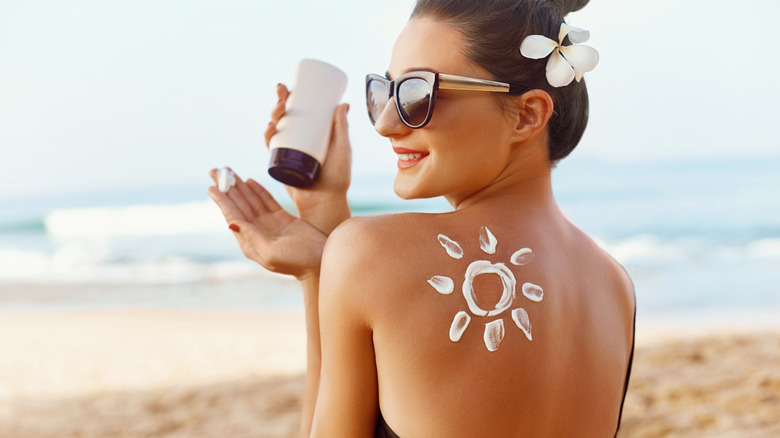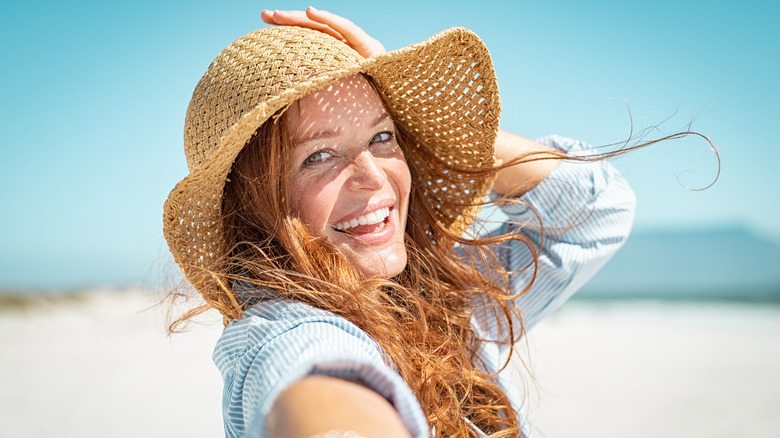The Real Difference Between UVA And UVB Rays
You know that the sun has harmful rays, and you're at the store looking for a good sunblock to use. The label says it "protects against UVA and UVB rays," but what does that mean? What's the difference between UVA and UVB rays, and do you need to worry about both?
According to the Environmental Protection Agency (EPA), UV stands for ultraviolet, and there are three types of ultraviolet rays from the sun — UVA, UVB, and UVC. UVA rays cause eye damage and skin aging and can lead to skin cancer. UVB rays also cause skin aging and skin cancer, as well as sunburns and snow blindness. In addition, both UVA and UVB rays can make it more difficult for your body to fight illness. The third type, UVC rays, are less cause for concern. Possessing the shortest wavelength among the three, UVC rays are not powerful enough to penetrate the ozone layer and hit the Earth's surface, reports the U.S. Centers for Disease Control and Prevention (CDC).
So while you should get five to 15 minutes of sun exposure two to three times a week for vitamin D, the rest of the time, you need to protect your skin and eyes against sun damage.
How to protect yourself from UVA and UVB rays
The atmosphere does a better job protecting you from UVB rays than it does UVA rays, but you still need protection from both. Some sunscreens only protect against UVB rays, so it's important to find one marked as "broad spectrum," meaning it protects against both kinds of radiation. The Skin Cancer Foundation recommends using broad spectrum sunscreen every day to reduce your risk of developing skin cancer. Specifically, you can reduce your risk of melanoma by 50% and squamous cell carcinoma by 40%. You can also prevent sun damage to your skin like wrinkles, age spots, and sagging.
The American Academy of Dermatology (AAD) recommends using a sunscreen with 30 SPF protection or higher, and one that is water resistant. Apply 15 minutes before going outside to all of your exposed skin that's not covered by clothing. Reapply after sweating or going in water, and every two hours. According to Healthline, the sun is strongest between 10 in the morning and 4 in the afternoon, so be especially careful during those times. Wear sunscreen, SPF protective clothing, a wide-brimmed hat, and sunglasses with UV protection.


